One was quite homely and unfeminine, and the other a beauty.Queen Christina of Sweden and Greta Garbo. Yet their destinies crossed into a fusion of karmic proportions that continues to invite question and pique curiosity. For both, the determination to impress and to puzzle was, of course, a deliberate part of he act. Christina once wrote, ” one should aspire to be not a copy but an original”. No one could deny that both Swedes had done everything possible to live up to that maxim. In an odd way, for both, starting with their differing appearances, belied the ordinary and the expected; their features and entire character somehow refused to conform. No queen was less queenly , in the conventional sense of the word, nor any woman less womanly than Christina. Garbo, from an extremely poverty stricken family would fulfill that role.
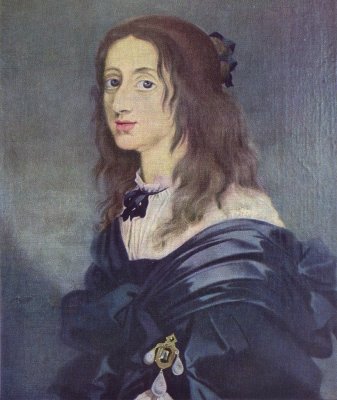
'' She moved to Rome and is one of four women buried in St. Peter’s Basilica. Pope John Paul II is buried between the tombs of Queen Christina and Queen Carlotta of Cyprus.''
”Chancellor: Europe is an armed camp, your Majesty, not utopia peopled with shepherds.
Christina: But Chancellor…(She looks out the window) Snow again, eternal snow.
Chancellor: Your Majesty, it is for Sweden. It is your duty.
Christina: Why is it my duty? My days and nights are given up to the service of the state. I’m so cramped with duty that to be able to read a book, I have to rise in the middle of the night. I serve the people with all my thoughts, with all my energy, with all my dreams, waking and sleeping. I do not wish to marry and you cannot force me.
Chancellor: You must give Sweden an heir.
Christina: Not by Charles, Chancellor.
Chancellor: You are Sweden’s Queen. You are your father’s daughter.
Christina: (in a stylized pose with her face looking heavenward, in a closeup) Must we live for the dead?
Chancellor: For the great dead, yes your Majesty.
Christina: Snow is like a wide sea. One could go out and be lost in it and forget the world and oneself.
Chancellor: There are rumors that your Majesty is planning a foreign marriage.
Christina: They are baseless.
Chancellor: But your Majesty, you cannot die an old maid.
Christina: I have no intention to, Chancellor. I shall die a bachelor!” ( www.filmsite.org)
Queen Christina ( 1933 ) was an excellent, though fictionalized, and historically flawed movie starring Greta Garbo as Queen Christina. Somewhat narcissistically, it centered upon Christina’s conflict between public and personal life, and her love for the Spanish Ambassador, Don Antonio de Pimentel.In this respect, it mirrored Garbo’s own torments of craving celebrity and her introverted, secret and private nature. Unlike the royal Christina, she was a the daughter of a latrine cleaner in Stockholm. In the film, escaping from the restrictions of royal life, she rides away from the palace, disguised as a male, and is snowbound at an inn where she incognito shares the last room with Don Antonio. Later, she renounces the throne not because of Catholicism or unwillingness to marry, but because she wishes “to be a human being” and to marry Don Antonio.
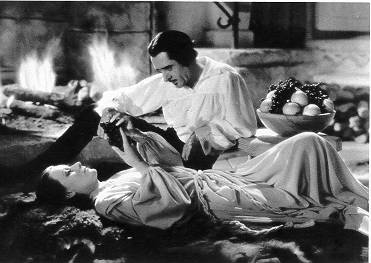
''Christina inherited the Swedish throne in 1632 at the age of six upon the death of her father. She was a complex and intelligent woman who was way ahead of her time. She was lesbian and did not care for the Lutheran religion. ''
In fact, as Ivan Michael Praetorius has pointed out, the the story of two Christina’s is more complex and profound. There was a vacuum after Her father Gustavus’s death which was filled with diverse spiritualist and esoteric interests which took control of the country; Louis de Geer, Alchemists, the Rosicrucian brotherhood and later Masonry which essentially controlled the wealth of the nation based on modernizing Swedish iron production. From earliest infancy Queen Christina was interested in the arcane arts–and at the same time in Alchemical science. Another, second secret war was taking place within her breast.
”There is ample evidence that, like her father before her, she had been tutored by the now ancient and chronically ailing Bureus, who, hunched over and shambling along on his crippled leg, swept the floors of the Royal Palace with his long white beard as he hobbled to keep each appointment with the precocious child-queen. He knew that the fate of magic–and of Sweden–might lie in the balance, for his ability to foresee the future through his rune-casting had warned him of what dangers were to come. While we know that Bureus dedicated to Christina a manuscript copy of his speculations on the mystical origin of the Runes, his Adulruna Rediviva, in 1643 and a copy of his great apocalyptic work, the Roar of the Northern Lion, in 1644, it is not known whether he showed her his reply to the Rosicrucian Fama, his Fama e Scanzia Redux of 1616, in which he subtly refutes the doctrine.”
Perhaps influenced by spiritual readings, Christina wanted to institute an Order of Immanuel in 1646, but her Alchemical advisor Johann Adler Salvius said it would be regarded as foolish and the idea never materialized. Worried by her interest in the spiritual ,which was later to manifest itself in a sudden conversion to Catholicism, Salvius hit upon the idea of inviting to Sweden the foremost apostle of the New Age, the French philosopher Rene Descartes, in the hope that this figure, and alleged secret Rosicrucian, would be able to curb her mystical yearnings. Prior to that that, Christina had also been approached by the alchemist Johannes Franck, who described her future reign as the fulfilment of Paracelsus’ prophecy of a return of Helias Artista and of Sendivogius’ vision of the rise of a metallic monarchy of the North. With these visions in store Franck urged on the Queen to start searching for the ruby red powder of the philosophers.
”However, the Chantry itself survived as the result of the queen’s earlier, esoteric conversion–not her well-known (as dramatized by Greta Garbo) embrace of the Catholic Church–but her rejection of the Chymical Wedding, which Salvius had pressed upon her in a transparent attempt to interest her in marriage and the production of an heir to the throne. The Chymical Wedding of Christian Rosenkreutz (Chymische Hochzeit Christiani Rosencreutz anno 1459) was edited in 1616 in Strasbourg, and its anonymous authorship is attributed to Johann Valentin Andreae. It is the third of the original manifestos of the mysterious “Fraternity of the Rose Cross” (Rosicrucians). Christina maintained a pathological aversion to heterosexual carnality, considering herself masculine and thus fearful of “another man’s” penetration.
It is evident that the glamorous Garbo was a far cry from the real Christina. Queen Christina was a troll-like, hygienically-challenged figure given to dirty jokes.As she grew older, her unusual characteristics became still more marked. Royal lady Grande Mademoiselle, the cousin of Louis XIV, called her ”extraordinary”; hardly an extravagant verdict after she was taken aback after an evening at the theatre during which Christina had distinguished herself by punctuating the performance with troopers’ oaths and deep sighs, lying back in her chair and flinging out her legs on one side and the other, and ”taking up attitudes that I have never seen, save in Trivelen and Jodelet, two buffoons, one French and the other Italian”; and all this to an incessant accompaniment of questions and comments, for as the whole world knew, Christina could rarely stop talking. Not surprisingly, the sexual politics on the set certainly mirrored the spirit of Christina’s decidedly unconventional life. Garbo developed the project with actress-writer Salka Viertel, who was rumored to be her lover, insisted that the male lead go to her former fiance and silent screen co-star John Gilbert, then ended up in a liaison with the film’s director, Rouben Mamoulian.
”In addition to leading the way for the likes of Mae West, Garbo also introduced the world to New Age philosophies. In her movie Mata Hari, Garbo is seen suggestively groping and dancing around the life-size Hindu goddess Shiva, as she emphatically proclaims: “Shiva, I dance for you tonight as the Bayaderas dance in the sacred temples of Java.” Co-star Ramon Novarro was shocked by the scene, implying an other worldly transformation in the dramatization of her performance, “The moment she began acting her whole being changed, and the force she radiated electrified those acting with her.” As a bewitching presence that was charmingly “unfaithful to millions,” would Garbo have sold out to Satan to become a successful and “electrified” actor? You be the judge.
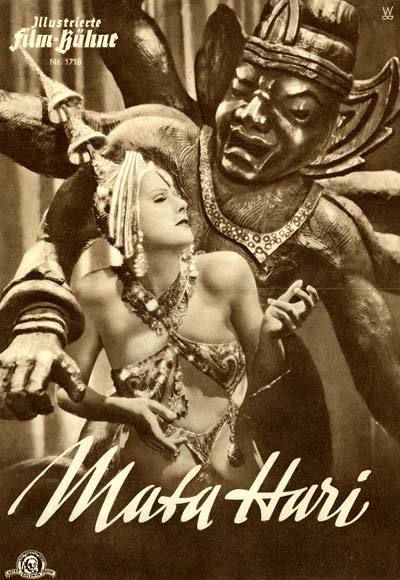
''The stage is dominated by a statue of Shiva. As the lights go down, a woman emerges from the wings dressed in oriental costume; veils, a metal breastplate and elaborate jeweled headdress. She dances for Shiva, writhing around the statue in a suggestive and impassioned manner. ''
The “immortal one” once declared:“I didn’t have anyone to whom I could talk freely, so I went to occultists, devil worshippers, mind readers, and those who occupied themselves with the summoning of spirits. Because I believed in life after death, I kept trying to talk to my father and Moje. During my dreams I heard their voices-terrible, angry voices…” ( www.goodfight.org)
In the film Queen Christina,Sixteen years after her inauguration at age six, Christina rides furiously through the woods on horseback after being summoned to the palace. She dresses as a man, wearing pants, a shirt with a stiff white collar, and a wide-brimmed hat. Her face is finally revealed after a long entrance sequence as she strides in ,with her two giant mastiffs and bounds up the steep staircase. Her heroic, victorious cousin from the warring Swedish army, Prince Palatine Charles Gustavus has arrived home, and “Sweden now has the commanding place in Europe” after thirty years of war. She is dismayed by the expensive costs of a victorious war in Swedish resources (4,000 horses and 200 cannon) and lives (10,000 Swedes). A gigantic portrait-painting of King Gustavus hangs behind her massive wooden table where she signs documents. Oxenstierna advises a political marriage with the Prince:
Lord Chancellor: They clamor for a Swedish marriage for your majesty. They clamor for an heir of Swedish blood.
Christina: In short, Chancellor, they clamor.
Her former lover and also Lord Treasurer, Count Magnus is put off by the Queen – she has lost interest in his unwelcome advances. He petulantly wonders if she will marry the “national hero.”
Prince Charles is ceremonially greeted by the Parliament and Queen and thanked on behalf of the Fatherland: “For the great victory you have won, Sweden is grateful. We will not forget.” After all of her constituents (the nobles, a gallant general, the Archbishop (David Torrence), and the Prince) have clamoured for more war to avenge the glory of Sweden, Queen Christina requests another opinion from the down-trodden peasants who were sacrificed and “fought this war.” With a proclamation of peace, she rejects calls for more violence and decrees that the bloody war will end:
There are other things to live for than wars. I’ve had enough of them. We’ve been fighting since I was in the cradle and many years before. It is enough. I will ask the powers to meet for a speedy and honorable peace. There must be an end!…Spoils, glory, flags, and trumpets. What is behind these high-sounding words? Death and destruction…Sweden victorious…an island in a dead sea. I tell you, I want no more of it. I want for my people security and happiness. I want to cultivate the arts of peace, the arts of life, I want peace and peace I will have.”
Queen Christina (1933) is one of Greta Garbo’s quintessential, most-remembered screen portrayals, and one of her finest films, with glowing scenes, enhanced by her favorite cinematographer William Daniels, that reflect the mystique of the lovely, enigmatic actress. This MGM film, Garbo’s first and only film with director Rouben Mamoulian, luxuriously captures the graceful allure and persona of one of Hollywood’s most famous and lovely performers – especially in its final enigmatic closeup. However, the romantic tragedy was poorly received if measured by its box-office appeal. But Garbo would go on to make some of her greatest films: including Anna Karenina (1935), Camille (1936), and Ninotchka (1939).
The biopic of independent-minded, controversial Christina, queen of 17th century Sweden, paired Garbo with popular silent-screen actor John Gilbert,her former fiancee and co-star was also purported to have been her passionate, off-screen lover). Although Gilbert’s career star was fading, Garbo insisted that he play the male lead role (although Laurence Olivier had been the original choice). The plot, ending with the Queen’s abdication from her kingdom and self-imposed exile and withdrawal for the ill-fated love of a Spanish nobleman-envoy, in order to follow her heart to Spain (to return her slain lover to his homeland, prophetically echoed the same sort of conflict that Garbo struggled with in her private life.
According to her servant, the people say that she prefers the crafty Lord Treasurer Magnus over heroic Prince Charles. In fact, the wilful queen appears happier with her lady-in-waiting Countess Ebba Sparre , whom she affectionately greets with a mouth-to-mouth kiss. Christina must attend to her official duties of “ambassadors, treaties, councils” instead of going sleigh-riding with Ebba:
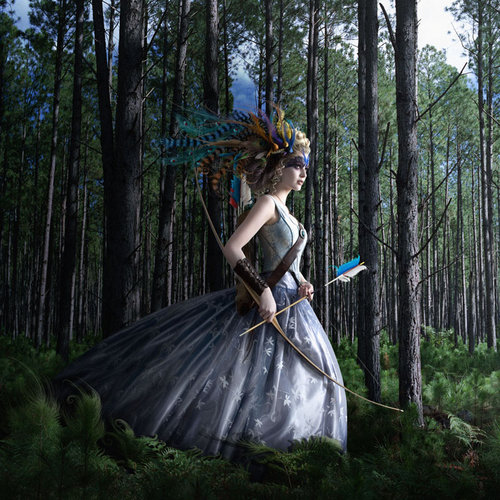
Alexia Sinclair:''Her father’s only heir, she was raised as a Prince, educated as a boy, and adored traditionally male sports. Christina even took the oath as a king, not a queen. Growing up, she was nicknamed “Girl King” and, at the age of six, upon her father’s death, Christina became the Queen of Sweden.''
Christina: But we’ll go afterward, Ebba.
Ebba: Oh, you always say that, but at the end of the day, you’re never free to go anywhere. You’re surrounded by musty old papers and musty old men and I can’t get near you.
Christina: Today, I’ll dispose of them by sundown, I promise you, and we’ll go away for two or three days in the country. Wouldn’t you like that?
Ebba: Oh, I’d love it.
With the Lord Chancellor, she analyzes a revised treaty from Cromwell in England. When he again broaches the subject of her marriage to Prince Charles, she dislikes the tiring topic. The Queen repeatedly avoids politically-inspired marriages. Confronted with the pressing demands of a head of state, Christina feels stultified, constrained and limited by the thought of a political marriage, by the roadblocks to her remaking of the world through philosophy and art, and by her expected duty to marry a Swedish hero – to provide a racially-pure heir and successor to the throne. Distraught, she steadfastly avows not to marry and proclaims herself a life-long “bachelor”: ( www.filmsite.org)
In a splendid twist on sexual identities and preferences, the lusty chambermaid Elsa (Barbara Barondess) propositions the young man (cross-dressed Christina), but she/he declines, implying his/her preference for male company – and more widely implying that they both have homosexual interests:
Elsa: (To Christina) Shall I help you off with your boots, sir?
Christina: No thank you…
Don Antonio: You’re very pretty, Elsa. Are you also good?
Elsa: When I do not like a man, yes.
Christina: That’s true virtue.
Don Antonio: The basis of all morality in a sentence.
Elsa: Can I get you anything, sir?
Christina: No, thank you.
Elsa: The master says you’re to have everything you need.
Christina: Hmmm.
Elsa: (at the door with raised eyebrows as she departs) If you should need anything, my room is at the end of the passage.
Don Antonio: She prefers you. You have the better chance.
Christina: I’d give her up gladly if you’re interested.
Don Antonio: No, I’m not interested. Well, don’t you think since we’re going to share the same bed we should be introduced?
Christina introduces herself simply as Count Dohna. Their conversation becomes more innuendo-laden as to gender identity and sexual persuasion as they prepare for bed:
Don Antonio: Which side do you sleep on, your right or your left?
Christina: I don’t know, I never thought of it.
Don Antonio: They say that a man should always sleep on his left side to keep his sword arm free. It’s hereditary. It’s instinct. (pause) Aren’t you going to undress?
Christina: Yes.
Taking off her outer, concealing clothing in front of the roaring fireplace, she stands in a thin white blouse and reveals herself to him. She alters her posture only slightly, bending her knee and leaning. After a bug-eyed double-take at the roundness of her breasts under her shirt, Don Antonio observes:
Of course. It had to be. I felt it. I felt it. A presence. Oh, life is so gloriously improbable.
The screenplay for the semi-historical, costume melodrama, written by H.M. Harwood, Salka Viertel, and with dialogue by S. N. Behrman was based on Viertel’s own original screen story (co-authored with Margaret P. LeVino). History is partially rewritten in the tale of sacrificial love, duty, and strength. Taglines advertising the film proclaimed: “A 17th century maiden who loved with a 20th century madness,” and “She was crowned King of Sweden…lived and ruled as a man…But surrendered to Love.” Since the actual Queen Christina of Sweden (1626-1689) was bisexual in orientation, this provided the story with a pretext for its lesbian leanings. Furthermore, the cross-dressing and gender disguises of Garbo, her romantic attraction to her own lady-in-waiting, and her notorious bedroom scene in the inn with Gilbert further troubled film censors, but engendered curiosity for the glamorous star.
Like Garbo, Christina was involved in deep intrigues and likely manipulated from above and below by forces and circumstances beyond their grasp. Like Garbo, Christina was one of those people who seem born to hit the headlines. Both had a resolute refusal to marry and both exercised a difficult renunciation of the status and prestige they had attained for reasons that may have only been a pretext for other issues. Both had eccentric manners, delved into the occult and had sexual inclinations that differed greatly from social convention. Both obtained more than their fair share of publicity; and at the end suffered the usual consequences of over-exposure and died half-forgotten by the world, while sufficiently impressing contemporaries with the brilliance and strangeness of their personalities to remain a source of puzzlement to later generations.


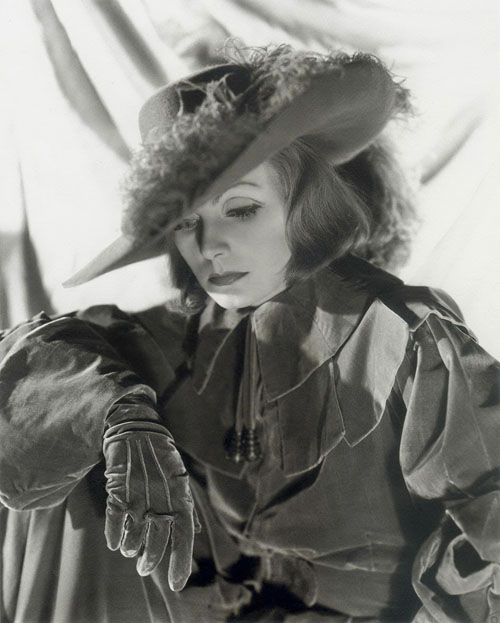

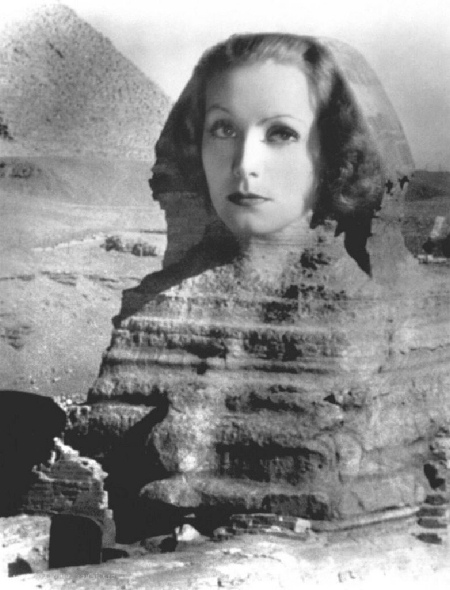 Greta Garbo. Sphinx photo. 1931. Clarence Sinclair Bull
Greta Garbo. Sphinx photo. 1931. Clarence Sinclair Bull
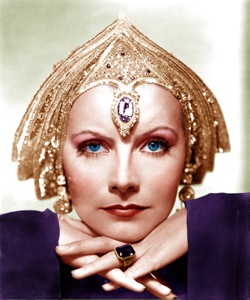
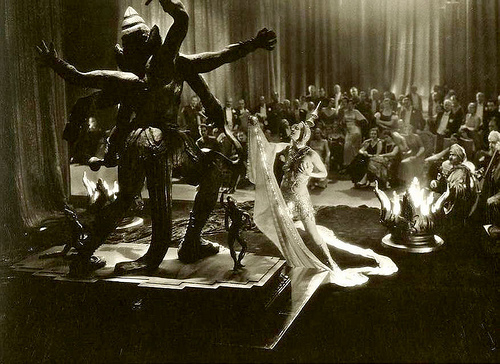

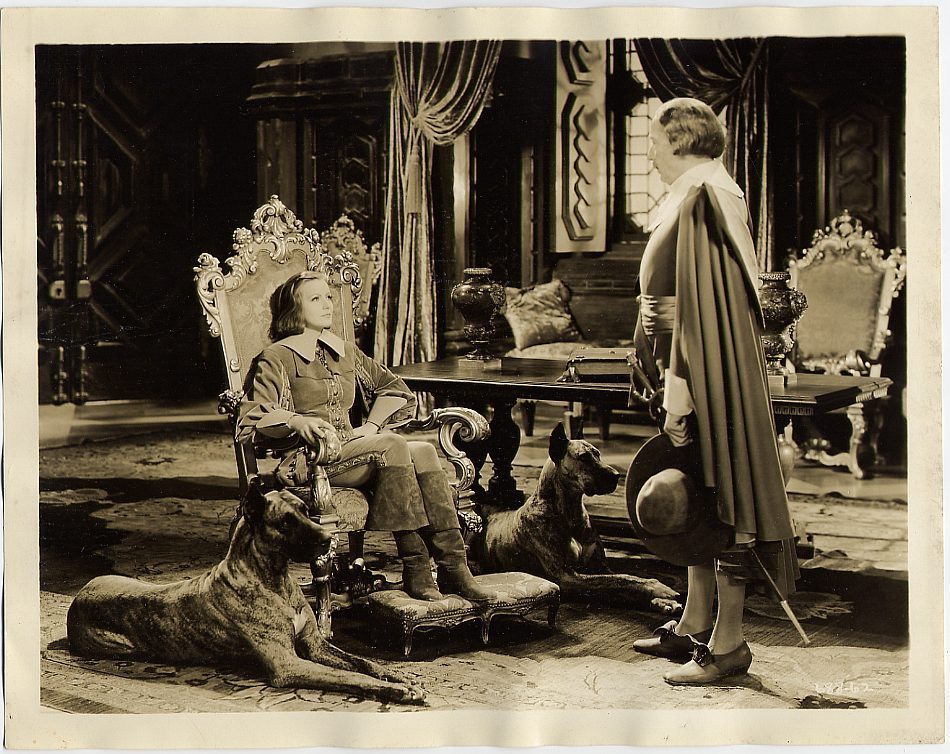



 COMMENTS
COMMENTS
Very interesting information as well as a detailed analysis which i found here helped me understand the phenomenon of Garbo more deeply. I love the movie QUEEN CHRISTINA for several reasons and look for information about it with great passion and enthusiasm.
I have seen the film several times, but unfortunately dubbed in German. Hearing Garbo’s voice or being deprived of it makes a huge difference. Therefore I hope to get the film in original somewhere. Here, the interesting fact refers to John Gilbert Garbo’s co-star whose voice did not allow him to continue the career in the sound era and to adapt to new requirements. It would be interesting to hear him.
Anyway, thanks for the website,
Best wishes,
Marcin
thanks Marci. My first real stab at her so to speak. The ” Garbo phenomenon” was what inspired me to look into her and I still don’t understand her story completely.
Hello,
I have a new blog dedicated to the old time glamour Hollywood photographers that I have just started. I thought you might want to take a look:
http://vintagemoviestarphotos.blogspot.com/
I have enjoyed your site and thought you might like my blog. Thanks in advance for looking.
My best to you!
Sincerely, Barb